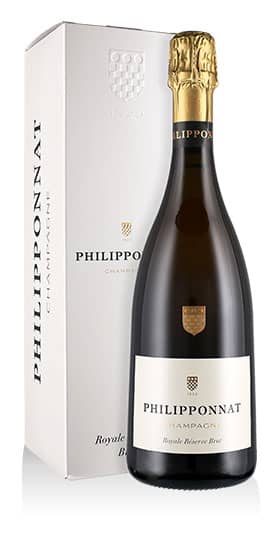Philipponnat
Philipponnat is the Champagne house with origins dating back to 1522. In a place called Le Léon and located between Ay and Dizy it is possible to place the first steps taken by Apvril le Philipponnat in this fascinating world. Precisely in the ancient stages of development, the Philipponnat family is represented by winemakers and wine merchants closely linked to the Crown and with a solid entrepreneurial tradition referable to the city of Ay. Originality, excellence and simplicity are the values that still today the descendants of the Maison are committed to handing down in the memory of the founders. The spectacular cellars of the Château de Mareuil belong to the eighteenth century and the Clos de Goisses is the parcel of 5 hectares carefully guarded for the enormous prestige of the position. With 20 hectares of vineyards classified as Premiers and Grands Crus, Philipponnat continues to work the land with ancient practices such as manual weeding and plowing with draft horses. The practice of introducing reserve wines stored in oak barrels according to the solera practice in order to preserve traces of previous vintages in every Champagne to come is also typical in non-vintage Champagne. Another distinctive feature concerns the indication on the back of the vintage of the base wines used in non-vintage Champagne, the dosage and the disgorgement date.
Philipponnat Champagne
To create splendid cuvées, Philipponnat carefully selects the grapes to be vinified, often looking with interest at a more advanced state of ripeness and a first refinement in oak barrels. The Philipponnat Champagnes are played on the balance between intensity and freshness, characteristics coming from the Pinot Noir harvested in vineyards classified as Premiers and Grands Crus. The cuvées classified as Royale Réserve Brut, Royale Réserve Non Dóse, Royale Réserve Rosé are all the result of the first pressing with an aging of up to four years in the cellar. From 25% to 35% reserve wines are used treated with the solera method and able to always guarantee continuity with previous vintages. With the Vintage Champagne we are faced with the identity of the vintage with an aging that often exceeds six years. With the Cuvée 1522 we pay homage to the ancestors who have had a relationship with the lands of Ay since the 16th century: with an aging that reaches eight years they remain an emblem of great balance. With the Clos de Goisses the grapes from this small parcel spread over a slope of 45 ° and favored by great exposure are vinified to obtain powerful and memorable wines.
What are the characteristics of Champagne Philipponnat Blanc de Noirs?
Champagne Philipponnat Blanc de Noirs has highly recognizable characteristics that make it a wine to try without hesitation. Obtained from Pinot Noir grapes, it appears golden in color, with a lively and consistent perlage. The nose has exotic fruit, notes of spice bread and hints of almond, of great aromatic intensity on the palate, good acidity and right balance. Very persistent on the palate, with smoky and spicy notes, it is suitable to accompany fish with butter, game, and foie gras.
What distinguishes Philipponnat Champagne from Trentodoc?
Champagne Philipponnat is produced with the Champenoise Method in the Champagne region, the only one from which sparkling wines with this name can come. Compared to the Trentodoc Classic Method, the climatic conditions affecting the grapes, the type of blend allowed by the disciplinary and the refinements change despite being united by a refermentation in the bottle.
What is the price of a Philipponnat Champagne?
On the Vino.com website, the competitive prices of Philipponnat Champagne range between € 50 and € 80.

